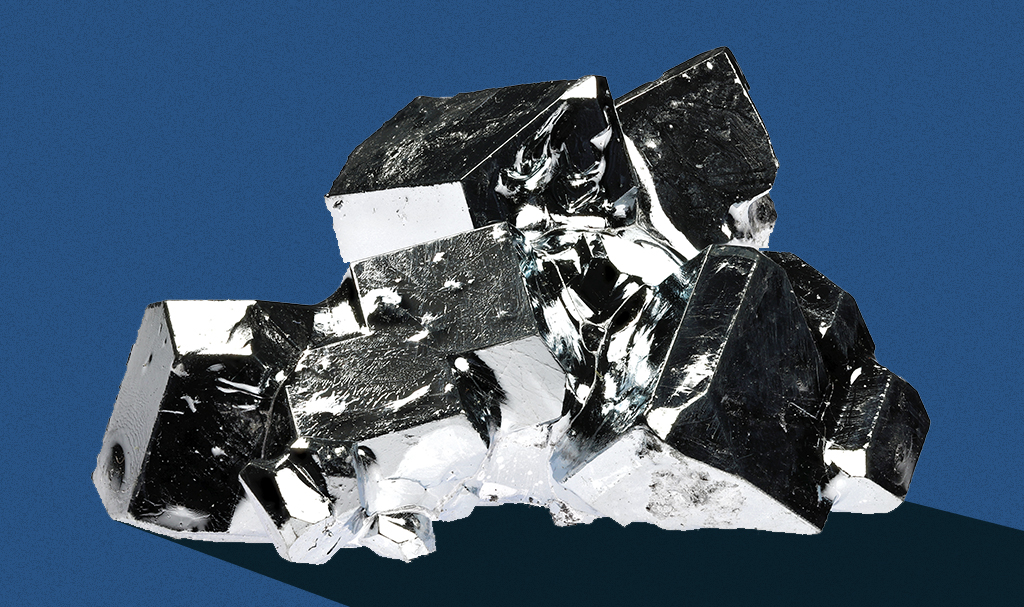[ad_1]

AsianScientist (Jan. 20, 2021) – A research team from South Korea has invented a new method of creating usable composites of liquid gallium metal. The various gallium composites and the mechanism behind their formation are described in Science Advances.
A soft, silvery metal typically found in semiconductors and transistors, gallium (Ga) has proven indispensable for the development of modern electronics. In 2014, a trio of researchers from Japan won the Nobel Prize in Physics for inventing the blue light-emitting diode—of which a key ingredient is gallium nitride. As gallium and its alloys are excellent conductors of heat and electricity, it comes as no surprise that up to 98 percent of commercial demand for gallium comes from the semiconductor and electronics industry.
Just like mercury, gallium is a liquid at temperatures above 30°C. However, both pure gallium and gallium mixtures or alloy have high surface tension, restricting their ability to spread throughout surfaces. This makes gallium difficult to handle, shape or process, limiting its potential for widespread use beyond electronics.
To overcome this limitation, a team from the Institute for Basic Science (IBS) and Ulsan National Institute of Science and Technology (UNIST) invented a new method to create usable composites of gallium with desirable properties. By incorporating filler particles, the liquid gallium also takes a paste or putty-like form, enabling easier handling.
“We learned that particles of a large enough size have to be used otherwise mixing cannot occur and a composite cannot be formed,” explained co-corresponding author Dr. Benjamin Cunning from IBS.
The researchers used four different materials as fillers in their study: graphene oxide, silicon carbide, diamond and graphite. Reduced graphene oxide (rG-O) and diamond, in particular, displayed excellent properties when incorporated in liquid gallium. Applying a Ga/rG-O coating increased the shielding efficiency of materials like film and paper to over 70 dB—making them also more capable of absorbing electromagnetic radiation. These materials could then be used to protect electronics from electromagnetic interference.
Meanwhile, incorporating diamond particles into the material resulted in a composite with a greater thermal conductivity, or ability to conduct heat. In fact the composite’s thermal conductivity exceeded that of commercially available thermal paste by over 50 percent. According to the authors, this indicates that the gallium-diamond mixture may be effective as a thermal interface material that transfers heat between solid surfaces.
Finally, the group even created and tested a composite made of gallium and commercial silicone putty, popularly known as Silly Putty. Not only was the resulting material stretchable, but it was also malleable—displaying superior mechanical properties compared to pure gallium.
The different gallium composites tested in the study can be applied in various scenarios. For instance, they can be used to create soft and flexible electronics for biomedical implants or wearable devices. The authors also showed that the gallium composite can be fashioned into a porous, foam-like material with the ability to withstand a blowtorch for one minute without damage.
“We have discovered that a wide variety of particles can be incorporated into liquid gallium and have provided a fundamental understanding of how particle size plays a role in successful mixing,” concluded Professor Rodney Ruoff, director of IBS’ Center for Multidimensional Carbon Materials. “We hope our work inspires others to discover new functional fillers with exciting applications.”
The article can be found at: Wang et al. (2021) A General Approach to Composites Containing Nonmetallic Fillers and Liquid Gallium.
———
Source: Institute for Basic Science; Photo: Shutterstock.
Disclaimer: This article does not necessarily reflect the views of AsianScientist or its staff.
[ad_2]
Source link